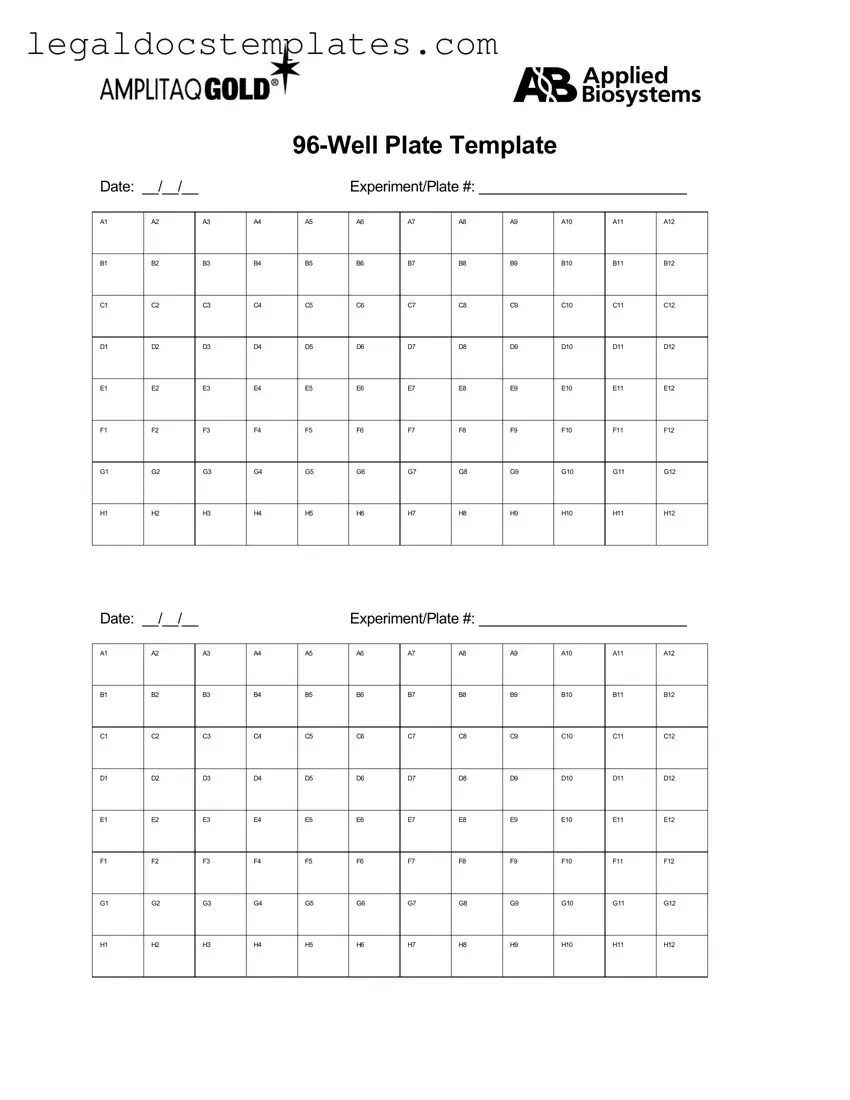A 96 Well Form is commonly referred to in laboratory settings, particularly those focused on biological and chemical research. It's a template or a plate with 96 small, round wells arranged in an 8x12 grid. Each well can contain samples for experiments, reactions, or storage, allowing for high-throughput analysis and testing. This form has become a staple in various fields for its efficiency in handling multiple samples under identical conditions.
Using a 96 Well Form involves several steps which can vary slightly depending on the specific application. Generally, you will:
-
Prepare your samples and reagents.
-
Pipette the appropriate volumes into the wells according to your experimental design.
-
Proceed with the experiment, which may involve incubation, heating, cooling, or adding further reagents at different stages.
-
Analyze the results after the experimental process is completed, which could include reading absorbance, fluorescence, or luminescence, depending on your objectives.
A variety of experiments can be performed using a 96 Well Form, including but not limited to:
-
Enzyme-linked immunosorbent assays (ELISA)
-
Cell culture
-
Protein binding assays
-
PCR reactions
-
Drug screening
Whether a 96 Well Form can be reused depends on the material it's made from and the type of experiment performed. Glass or certain plastic forms designed for high durability can be cleaned and sterilized for reuse. However, for experiments requiring high levels of sterility or those involving harsh chemicals that could degrade the wells, single-use is recommended. Always consult your form's manufacturer guidelines to ensure proper use and handling.
96 Well Forms are typically made from one of several materials:
-
Polystyrene, for general laboratory use, especially in cell-based assays where cell adhesion is necessary.
-
Polypropylene, known for its chemical resistance, suitable for storing biochemicals and conducting thermal cycling reactions.
-
Polycarbonate or glass, used in applications requiring high thermal stability.
How are samples added and removed from the wells?
Samples are added to and removed from the wells using pipettes, which can dispense precise volumes. For adding samples, a micropipette is used to transfer the desired volume of liquid into each well carefully. To remove samples or supernatants without disturbing solid or cell layers, pipettes equipped with fine tips or a vacuum aspiration system are commonly used.
Yes, the 96 Well Form is designed to be compatible with automated laboratory equipment. This includes automated pipetting systems, plate readers, and plate washers. The standardized dimensions of the form allow it to fit into these systems, enabling high-throughput screening and analyses with minimal manual intervention.
To prevent contamination during use, several practices are recommended:
-
Always wearing gloves and using sterile pipette tips.
-
Working in a clean environment, such as a laminar flow hood if sterility is critical.
-
Using a plate sealer or cover to protect wells from airborne contaminants and cross-contamination.
-
Ensuring the form is stored properly before and after use.
Yes, the wells in a 96 Well Form can come in different shapes and sizes, tailored to various research needs. The most common shapes are round and flat-bottomed, ideal for liquid handling and assays requiring precise optical measurements. V-shaped or U-shaped bottoms are available for applications that involve pellet formation at the bottom of the wells, such as centrifugation. The choice of well shape depends on the specific requirements of the experiment being conducted.

